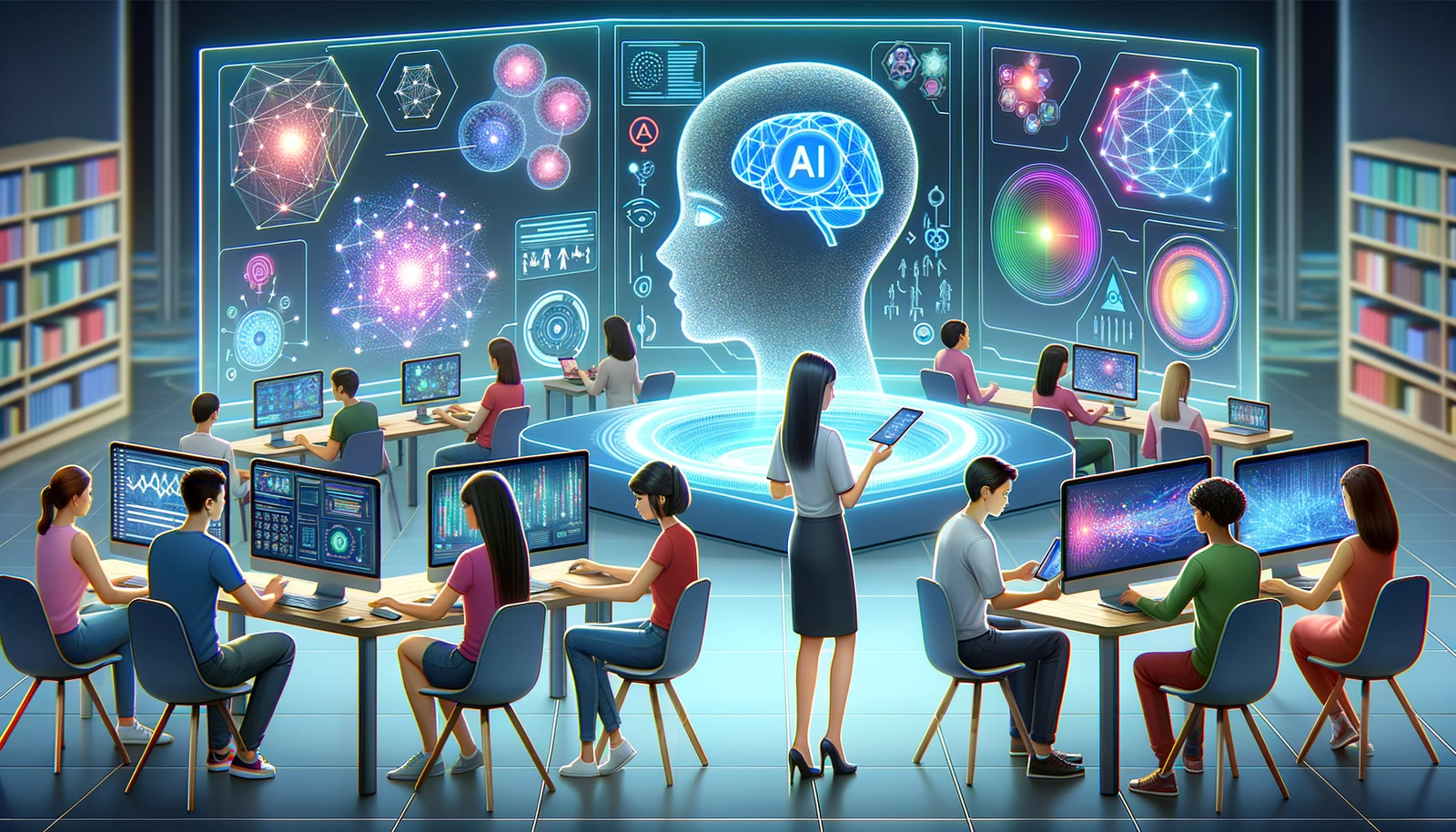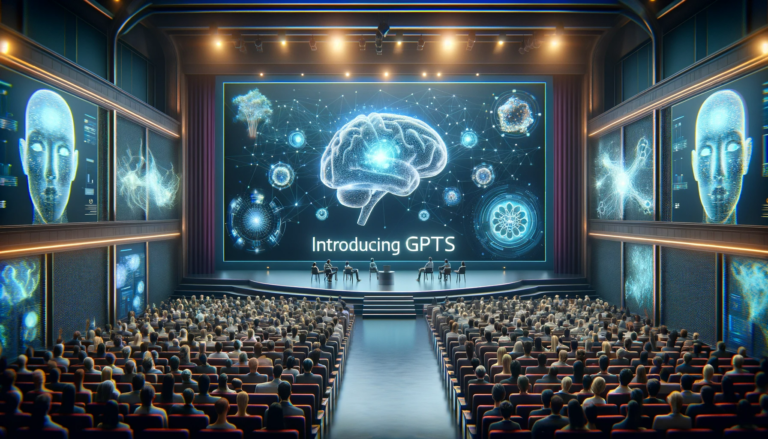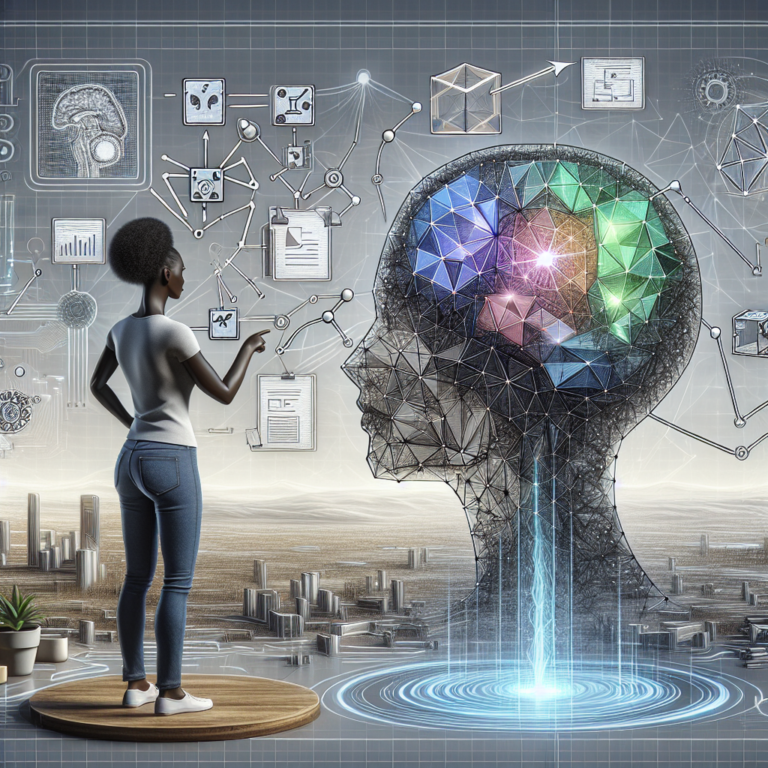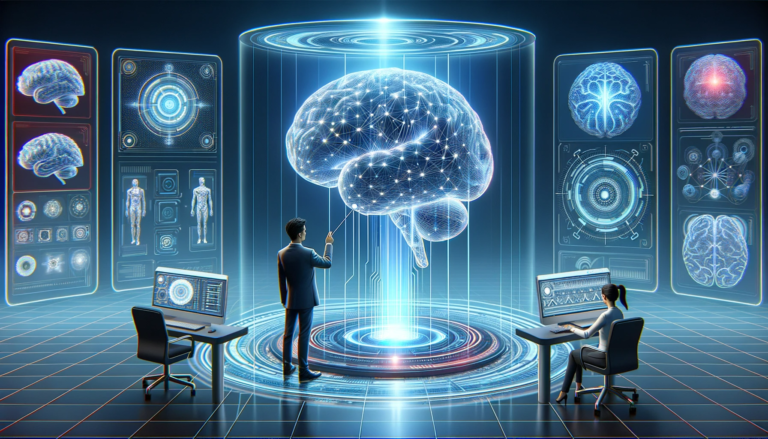
If you’ve ever been curious about diving into the exciting world of Artificial Intelligence (AI), look no further! This article will guide you on how to get started with AI, providing you with essential information and steps to embark on this fascinating journey. From understanding the basics of AI to exploring different applications and learning resources, this article will equip you with the necessary knowledge and resources to begin your AI adventure. So, let’s explore the world of AI together and unlock endless possibilities!

Choosing the Right AI Framework
When getting started with AI, one of the first important decisions you’ll need to make is choosing the right AI framework. An AI framework is a software library or tool that provides the necessary building blocks and functionalities to develop AI applications. There are several different AI frameworks available, each with its own strengths and areas of focus. By understanding the different AI frameworks and evaluating your needs and goals, you can make an informed decision that will set you on the right path in your AI journey.
Understanding the Different AI Frameworks
Before diving into the details of each AI framework, it’s important to have a general understanding of the different options available. Some popular AI frameworks include TensorFlow, PyTorch, Keras, and scikit-learn. These frameworks are widely used and have a large community of developers, which means you can find plenty of resources and support to guide you along the way. Additionally, these frameworks offer a wide range of functionalities, allowing you to tackle various AI tasks such as deep learning, natural language processing, and computer vision.
Evaluating Your Needs and Goals
When choosing an AI framework, it’s important to consider your specific needs and goals. Are you looking to develop deep learning models or work primarily with natural language processing? Are you a beginner looking for a user-friendly framework or an experienced developer in need of advanced features? By determining your needs and goals, you can narrow down your options and choose a framework that aligns with your specific requirements. It’s also worth considering factors such as scalability, performance, and community support when evaluating AI frameworks.
Considerations When Choosing an AI Framework
There are several important considerations to keep in mind when choosing an AI framework. Firstly, you should consider the ease of use and the learning curve associated with the framework. If you’re new to AI, opting for a framework with a friendly and intuitive interface can be a good starting point. Furthermore, compatibility with other tools and libraries is crucial. Look for a framework that integrates well with the programming language you’re comfortable with and with other AI-related tools you might need. Lastly, consider the framework’s documentation and community support. Having access to comprehensive documentation and an active community can greatly facilitate your learning and problem-solving journey.
Preparing Your Data
Once you have chosen the right AI framework, it’s time to prepare your data. Data plays a vital role in training AI models and the quality of your data will directly impact the accuracy and performance of your models. Properly collecting, labeling, and preprocessing your data is therefore crucial for successful AI applications.
Collecting and Preparing Training Data
To develop an AI model, you need a training dataset. This dataset should include a sufficient number of examples relevant to the task you want your AI model to learn. For example, if you’re building a computer vision model to classify different types of animals, your training dataset should consist of a variety of animal images with corresponding labels. It’s important to collect data from diverse sources to ensure that your model learns to generalize well.
Labeling and Annotating Data
Labeling and annotating your data involves adding meaningful tags or annotations to each example in your dataset. This step is crucial for supervised learning tasks, where the AI model learns from labeled examples. Labeling can be a time-consuming and manual process, but it’s necessary to provide the necessary information for the model to learn patterns and make accurate predictions. There are also tools and services available that can help automate the labeling and annotation process, depending on the complexity of your data.
Data Cleaning and Preprocessing
Before feeding your data into the AI model, it’s important to clean and preprocess it. This involves removing any irrelevant or noisy data, handling missing values, and normalizing the dataset to ensure consistency. Data preprocessing techniques such as scaling, feature extraction, and dimensionality reduction can also be applied to improve the model’s performance. Cleaning and preprocessing your data helps to ensure that your AI model gets the most accurate and relevant information to learn from.
Understanding Machine Learning
To delve deeper into AI, it’s essential to have a solid understanding of machine learning. Machine learning is a subset of AI that focuses on developing algorithms and models that can learn patterns and make predictions or decisions without being explicitly programmed. By understanding the basics of machine learning, you can leverage this powerful technique to build intelligent AI applications.
Introduction to Machine Learning
Machine learning can be broadly categorized into two main types: supervised learning and unsupervised learning. In supervised learning, the AI model learns from labeled examples, making predictions based on the patterns it discovers. Unsupervised learning, on the other hand, involves training the model on unlabeled data, allowing it to discover hidden patterns and structures on its own. Reinforcement learning is another important type of machine learning that involves training a model based on feedback and rewards.
Supervised vs. Unsupervised Learning
Supervised learning is commonly used when there is a predefined set of labeled examples for the AI model to learn from. This approach is suitable for tasks such as classification, regression, and object detection. Unsupervised learning, on the other hand, is useful when the data is unlabeled or when there is a need to discover hidden patterns in the data. Clustering, dimensionality reduction, and generative modeling are common unsupervised learning techniques.
Types of Machine Learning Algorithms
Machine learning algorithms are the building blocks of AI models. There are various types of machine learning algorithms, each with its own characteristics and use cases. Some popular machine learning algorithms include decision trees, support vector machines, k-nearest neighbors, linear regression, logistic regression, and neural networks. Choosing the right algorithm depends on the specific task at hand and the nature of the data you’re working with.
Python for AI
Python is one of the most popular programming languages for AI development. Its simplicity, versatility, and extensive libraries make it an excellent choice for beginners and experienced developers alike. Understanding Python basics and familiarizing yourself with the libraries commonly used for AI tasks is essential to get started with AI.
Getting Started with Python
If you’re new to Python, don’t worry. Python has a gentle learning curve, making it accessible even to beginners. You can start by installing Python and an Integrated Development Environment (IDE) such as PyCharm or Jupyter Notebook to write and run your Python code. Take the time to familiarize yourself with Python syntax, data types, variables, loops, conditionals, and functions. There are plenty of online tutorials and resources available to guide you through your Python journey.
Python Libraries for AI
Python offers a wide range of libraries specifically designed for AI tasks. Some commonly used AI libraries include TensorFlow, PyTorch, Keras, scikit-learn, NumPy, and pandas. TensorFlow and PyTorch are popular deep learning frameworks that provide comprehensive tools for building and training neural networks. Keras, on the other hand, is a high-level API that runs on top of TensorFlow, making it easier to build and iterate on AI models. scikit-learn is a versatile library that offers a range of machine learning algorithms and tools, while NumPy and pandas provide efficient data structures and functions for numerical computations and data manipulation.
Understanding Python Syntax and Data Structures
To effectively use Python for AI, it’s important to have a good grasp of Python syntax and data structures. Python syntax is known for its simplicity and readability, which makes it an ideal language for beginners. Python offers various data structures such as lists, dictionaries, tuples, and sets to store and manipulate data. Understanding these data structures and their respective operations will enable you to effectively handle and process data for AI tasks. Additionally, knowing how to use control structures and functions in Python will allow you to write efficient and modular code.

Exploring Neural Networks
Neural networks are at the core of modern AI and deep learning. Understanding the fundamentals of neural networks is essential for building sophisticated AI models and achieving state-of-the-art results.
Introduction to Neural Networks
A neural network is a computational model inspired by the structure and functionality of the human brain. It consists of interconnected nodes, or artificial neurons, organized in layers. Each node takes inputs, performs computations, and produces an output that is passed on to the next layer. Neural networks have the ability to learn patterns and relationships in data, making them ideal for a wide range of AI tasks such as image recognition, speech processing, and natural language understanding.
Different Types of Neural Networks
There are several types of neural networks, each with its own architecture and specific use cases. Feedforward neural networks are the most basic type, where information flows in one direction, from the input layer to the output layer. Convolutional neural networks (CNNs) are commonly used for computer vision tasks, as they can effectively capture spatial relationships in images. Recurrent neural networks (RNNs) are designed to handle sequence data, making them suitable for tasks such as natural language processing and speech recognition. Other types of neural networks include Long Short-Term Memory (LSTM) networks and Generative Adversarial Networks (GANs), each with its own unique properties and applications.
Training and Tuning Neural Networks
Training a neural network involves feeding it a large labeled dataset and allowing it to learn from the data through a process called backpropagation. During training, the network adjusts the weights and biases of its connections to minimize the difference between its predictions and the true labels. Tuning a neural network involves tweaking the hyperparameters, such as the learning rate, number of layers, and number of nodes, to optimize its performance. Finding the right balance between underfitting and overfitting is crucial to ensure that the trained model can make accurate predictions on unseen data.
Deep Learning and AI
Deep learning, a subset of machine learning, has revolutionized the field of AI in recent years. Understanding the principles of deep learning and its applications is crucial for developing cutting-edge AI models.
Understanding Deep Learning
Deep learning is a subfield of machine learning that focuses on training artificial neural networks with multiple layers. These deep neural networks can learn hierarchical representations of data, allowing them to capture complex patterns and correlations. Deep learning models are known for their ability to achieve state-of-the-art results in various AI tasks, including image recognition, speech recognition, natural language processing, and generative modeling. Deep learning has particularly gained traction due to its ability to automatically extract features from raw data, eliminating the need for manual feature engineering.
Deep Learning Frameworks
To effectively implement and train deep learning models, deep learning frameworks are essential. TensorFlow, PyTorch, and Keras are popular deep learning frameworks that provide comprehensive tools and abstractions for building and training deep neural networks. These frameworks offer pre-built layers, optimizers, and training algorithms, making it easier to construct and experiment with complex deep learning architectures. They also provide interfaces to efficiently run computations on both CPUs and GPUs, enabling faster training and inference times. Choosing the right deep learning framework depends on factors such as ease of use, community support, and compatibility with your project requirements.
Applications of Deep Learning in AI
Deep learning has found widespread applications in various domains of AI. In computer vision, deep learning models have achieved remarkable success in image classification, object detection, semantic segmentation, and image generation. In natural language processing, deep learning models have been instrumental in tasks like text classification, sentiment analysis, machine translation, and question answering. Deep learning has also made strides in speech recognition and synthesis, as well as in the field of reinforcement learning for game playing and control systems. The diverse and ever-expanding applications of deep learning make it an exciting and powerful tool in the AI landscape.
Natural Language Processing
Natural Language Processing (NLP) is a subfield of AI that focuses on the interaction between computers and human language. NLP enables computers to understand, interpret, and respond to human language in a meaningful way. With the skyrocketing growth of text data on the internet, NLP has become an essential component of many AI applications.
Introduction to NLP
NLP encompasses a wide range of tasks, including sentiment analysis, text classification, named entity recognition, machine translation, and question answering. At its core, NLP involves processing and analyzing text or speech data to extract useful information. This includes understanding the grammar, semantics, and pragmatics of natural language, as well as handling the challenges presented by the ambiguity, variability, and complexity of human language.
NLP Techniques and Tools
NLP employs various techniques and tools to process and analyze text data. Tokenization is the process of breaking text into smaller units, such as words or characters. Stopping removes common words like “the” or “and” that might not carry much meaning. Stemming and lemmatization reduce words to their base or dictionary forms, respectively, to treat different forms of a word as the same. Part-of-speech tagging assigns grammatical labels to words. Named entity recognition identifies and classifies named entities like people, organizations, or locations. Sentiment analysis determines the sentiment expressed in text, be it positive, negative, or neutral. These are just a few examples of the techniques and tools used in NLP, and their selection depends on the specific NLP task at hand.
Building NLP Models
Building NLP models involves combining NLP techniques with machine learning or deep learning algorithms. These models learn patterns and relationships from labeled or unlabeled text data to make predictions or infer insights. Machine learning algorithms like support vector machines, random forests, or deep learning architectures such as recurrent neural networks or transformer models can be used for various NLP tasks. Properly preprocessing and vectorizing the text data, selecting appropriate features, and considering the context and domain specificity are essential steps in building effective NLP models. As NLP is a rapidly evolving field, keeping up with the latest research and advancements is important for staying at the forefront of NLP model development.
Computer Vision
Computer vision is a field of AI that focuses on enabling computers to understand and interpret visual data, such as images and videos. By emulating human vision capabilities, computer vision opens up a wide range of possibilities for AI applications, spanning from object recognition to autonomous driving.
Introduction to Computer Vision
Computer vision aims to extract meaningful information from visual data to enable AI systems to perceive and interpret the world. It involves analyzing and understanding images or videos to recognize objects, detect patterns, segment regions, or perform other tasks related to visual understanding. Computer vision models learn from large datasets of labeled images, enabling them to generalize and make accurate predictions on new, unseen images.
Image Processing Techniques
Image processing techniques play a critical role in computer vision tasks. These techniques involve manipulating and enhancing the visual data to extract meaningful features and facilitate subsequent analyses. Common image processing techniques include image enhancement, which improves the quality or visibility of the image, and image segmentation, which divides the image into meaningful regions or objects. Edge detection, feature extraction, and image filtering are other fundamental techniques used in computer vision. These techniques form the foundation for building more advanced computer vision models and systems.
Building Computer Vision Models
Building computer vision models involves training neural networks to recognize and interpret visual data. Convolutional neural networks (CNNs) have emerged as the dominant approach for computer vision tasks. CNNs are specifically designed to capture spatial relationships in images through the use of convolutional layers, pooling layers, and fully connected layers. Pretrained CNN models, such as VGG, ResNet, and Inception, are available and can be fine-tuned to specific tasks with additional training on custom datasets. Transfer learning, which leverages knowledge from pre-trained models, is often used to address the challenge of limited labeled image datasets. Building accurate and reliable computer vision models often requires a combination of careful data preprocessing, model architecture selection, and hyperparameter tuning.
Deploying AI Models
Deploying AI models is the process of making trained AI models available for use in real-world applications. Choosing the right deployment strategy, whether it’s cloud-based or on-premises, is crucial to ensure the scalability, availability, and security of your AI applications.
Choosing the Right Deployment Strategy
When it comes to deploying AI models, there are two main deployment strategies to consider: cloud-based deployment and on-premises deployment. Cloud-based deployment involves hosting your AI models on cloud platforms like Amazon Web Services (AWS), Google Cloud Platform (GCP), or Microsoft Azure. This approach offers scalability, flexibility, and ease of management, as the cloud provider takes care of infrastructure provisioning and maintenance. On the other hand, on-premises deployment involves hosting your AI models locally, within your own infrastructure. This approach provides greater control over data privacy and security but requires dedicated hardware resources and network infrastructure.
Cloud-Based AI Deployment
Cloud-based AI deployment offers numerous advantages. It allows you to easily scale your AI applications to handle varying workloads and accommodate increasing demand. Cloud providers offer a wide range of infrastructure options, from virtual machines to GPUs and TPUs, that can be provisioned on-demand. Additionally, cloud services often provide built-in tools and services for model deployment, monitoring, and management. They also offer integrations with other cloud services, such as storage, databases, and analytics platforms, to develop end-to-end AI solutions.
On-Premises AI Deployment
On-premises AI deployment is suitable for organizations that prioritize data privacy, security, and control. By hosting AI models within their own infrastructure, organizations can ensure that sensitive data remains within their premises, reducing potential security risks. On-premises deployment also minimizes dependence on external internet connectivity, providing greater reliability and minimizing latency. However, on-premises deployment requires organizations to invest in appropriate hardware resources, including servers, GPUs, and storage systems, and to manage their own infrastructure, which can be resource-intensive.
Ethical Considerations in AI
As AI becomes more prevalent in our lives, it’s crucial to consider the ethical implications of AI development and deployment. From bias and fairness to privacy and security, ethical considerations play a central role in ensuring that AI technologies are developed and used in a responsible and accountable manner.
Understanding Ethical Concerns in AI
Ethical concerns in AI revolve around the potential impact and consequences of AI systems on individuals and society as a whole. Some key ethical concerns include biases in AI models, transparency and explainability of AI decisions, accountability for AI systems, and the potential displacement of human labor. It is important to address these concerns to build trustworthy and inclusive AI systems that benefit all stakeholders.
Bias and Fairness in AI
One of the most critical ethical concerns in AI is the presence of biases in AI models and systems. AI models can inadvertently learn biases present in the training data, resulting in discriminatory or unfair decisions. For example, facial recognition systems that are trained on predominantly white faces may struggle to accurately recognize people with darker skin tones. It’s crucial to proactively identify and mitigate biases in AI systems to ensure fairness and prevent discrimination. This involves diverse and representative training data, regular auditing of models for bias, and post-deployment monitoring to identify and rectify any unintended biases.
Privacy and Security Considerations
AI systems often require access to large amounts of data to train and make accurate predictions. This raises concerns about privacy and the security of personal data. Organizations that collect and use data for AI purposes must prioritize data privacy by obtaining informed consent, anonymizing or de-identifying data, and implementing robust security measures to protect against data breaches and unauthorized access. Transparency and accountability in data usage and handling are fundamental to building trust and maintaining public confidence in AI systems.
In conclusion, getting started with AI involves understanding the different AI frameworks, evaluating your needs and goals, and making an informed decision. Preparing your data is vital for training accurate AI models, and understanding machine learning is essential for developing intelligent applications. Python provides a user-friendly environment for AI development, and exploring neural networks is crucial for building complex models. Deep learning and AI have transformed the field, and natural language processing and computer vision enable AI systems to understand and interpret human language and visual data, respectively. Deploying AI models requires choosing the right strategy, and ethical considerations play a vital role in responsible AI development and deployment. With proper knowledge and guidance, you can embark on an exciting AI journey and contribute to the advancement of artificial intelligence.






